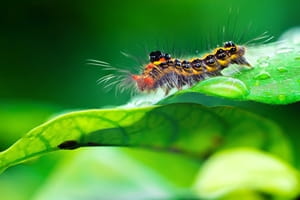
April is Plant, Pest and Disease Awareness Month. Many people in agriculture and the government asking residents to actively try to prevent pests in their area, according to the United States Department of Agriculture.
Invasive pests can have a considerable effect on the environment and its resources. If an invasive pest gets comfortable in one area, it won't be long until it breeds and spreads to other parts of the state, hurting several ecosystems. Some of the most common invasive pests include the emerald ash borer, fire ants, gypsy moths and the Asian longhorned beetle.
These pests are known to be especially aggressive and may attack many types of environments and possibly beneficial pests, the Pacific Northwest Research Station noted. If these pests find their way to farmlands, they can significantly reduce the number of crops, hurting the agricultural market as a whole. It could also hurt farmers who export crops to foreign areas, as these foreign buyers may decide to buy from another country. However, if these pests have fully invaded an area, it can cost a significant amount of money and time to try and remove them. Given the problems caused by these pests, the best method is to prevent them in the first place.
There are a few actions residents can take to reduce the risk of invasive pests. These include: